Getting Some Answers About the Mysterious Prehistoric City That Has Left Scientists Baffled for Years
Nestled in an expansive bed of coral reefs is one of the world’s oldest archaeological sites – the ancient city of Nan Madol. Over the years, everything about the existence of the ruins has given rise to more questions with few answers.
Slightly smaller than NYC, the place is considered an engineering wonder for several reasons. So, let’s travel back to tour this mysterious prehistoric city that has baffled the best of scientists for centuries.
Where Is This City?
One of the shocking aspects of the ruins is their strange location. Nan Madol can be found in the mysterious depths off the southeastern coast of the Micronesian island, Pohnpei. It is the pride of the Pacific Ocean as one of the world’s rarest megalithic sites.

Source: Youtube
Interestingly, it’s the only one built entirely atop coral reefs. So, what makes it unique? The imposing structure that consists of 92 man-made geometrical stone islets has been painstakingly built for a purpose. Yet, no one knows why and how the once-thriving city came to be.
An Engineering Marvel
The stones and columns used for the meticulous construction of Nan Madol are hefty, weighing more than 90 tonnes. As an integral part of the Federation States of Micronesia, this region became a powerful religious and administrative complex from where a dynasty of tyrannical monarchs ruled over the Island of Pohnpei until 1500 AD.
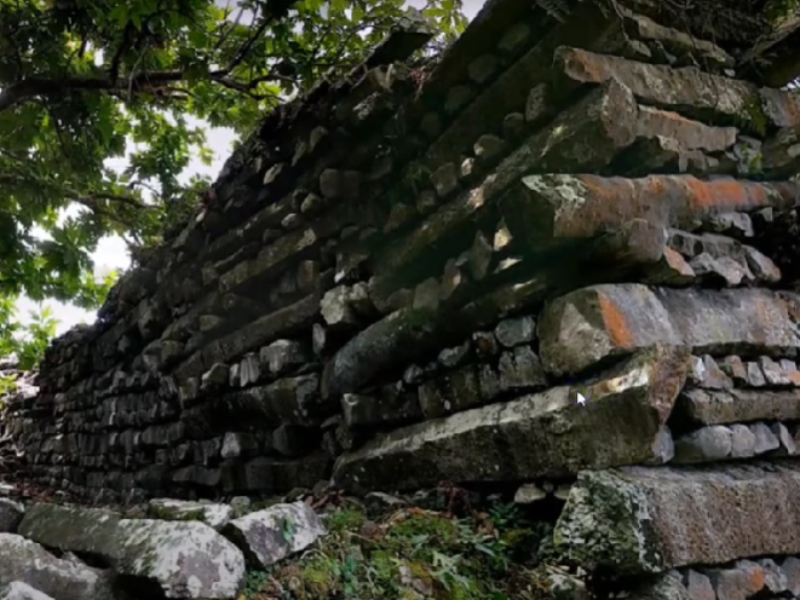
Source: Youtube
These impressive basalt structures were so gracefully put together at a time when there were no tools for heavy lifting, making the prehistoric city an engineering marvel.
Baffling Questions
The technology of those times has been a puzzling factor for the scientists who are still unable to wrap their heads around the mystery of the ruins. Even though the walls and platforms have no apparent carvings or art of any form, their rustic elegance remains unmatched. Who on earth could have accomplished such a feat during prehistoric times?
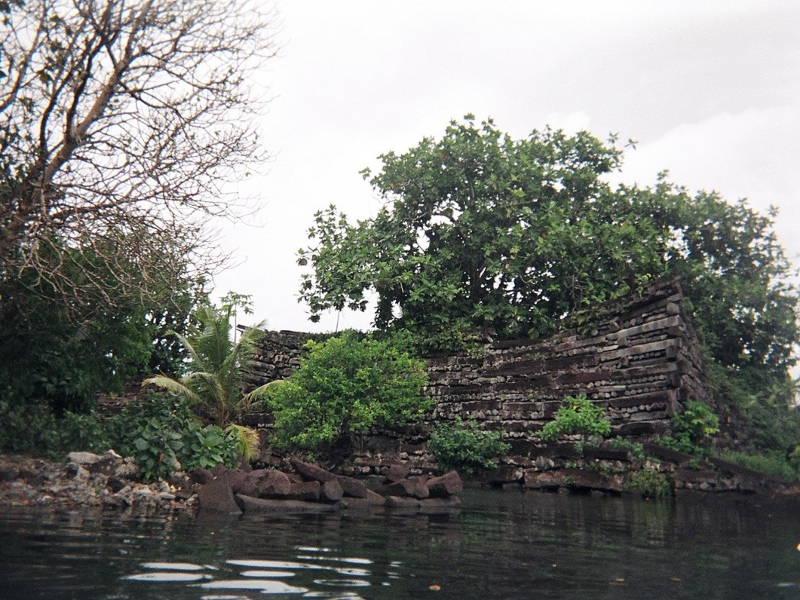
Source: CT Snow / Common wiki
Also, why would anyone erect a city atop coral reefs in the middle of an ocean with no food or water source? There are many such baffling questions, and the experts are still looking for a definitive answer.
The Magnificent Megalithic Architecture
The ruins of the ancient city, constructed entirely on giant basalt columns and slabs, have an impressive scale, with the walls as tall as 25 feet and as thick as 17 feet in certain places. When you look at the gorgeous tapestry of the artificial islets that are intricately intertwined to form a network of canals, you will understand where its nickname, “Venice of the Pacific,” comes from.

Source: wikipedia
The carbon dating done on these structures has revealed their age to be around 900 years, but the artificial islets belong to the 8th and the 9th centuries CE.
The Meaning of Nan Madol
Not surprisingly, Nan Madol gets its beautiful name from the intricate web of waterways and tidal canals that crisscross the ruins. The words translate to “the spaces in between” or “within the intervals,” which is an apt representation of the place.
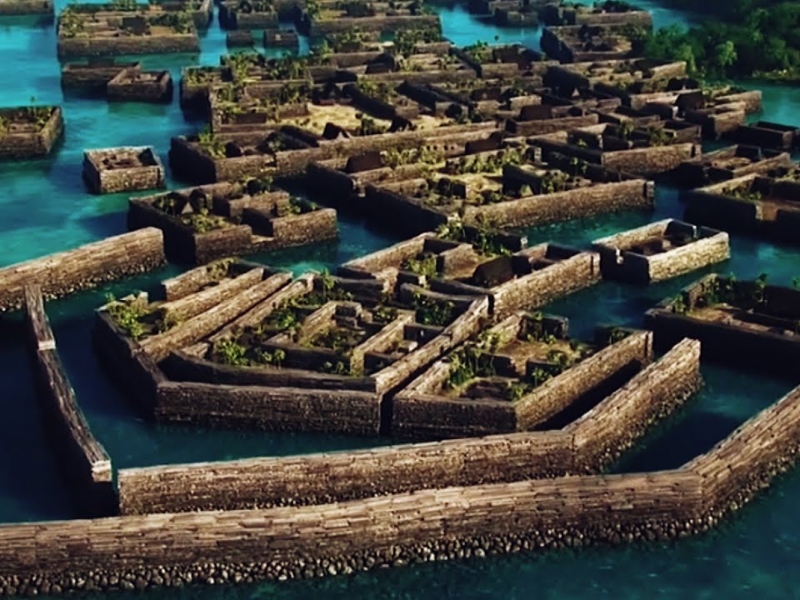
Source: youtube
According to Gene Ashby, author of Pohnpei, An Island Argosy, the original name of the hidden gem was Soun Nan-leng, or the Reef of Heaven. It also hints at the city’s ancient history and the spooky reputation of hosting ghosts, adding mystery to the name. It’s also sometimes known as the eighth wonder of the world.
The Early Inhabitants
Even though some genuinely believe the ancient city to be largely uninhabited and consider it a giant machine, the radiocarbon dating of the ruins has thrown some light on its early inhabitants. Some speculation has been that the earliest human settlement on the Pohnpei Islands was in 1 AD, but human activity started only around 80-200 AD.
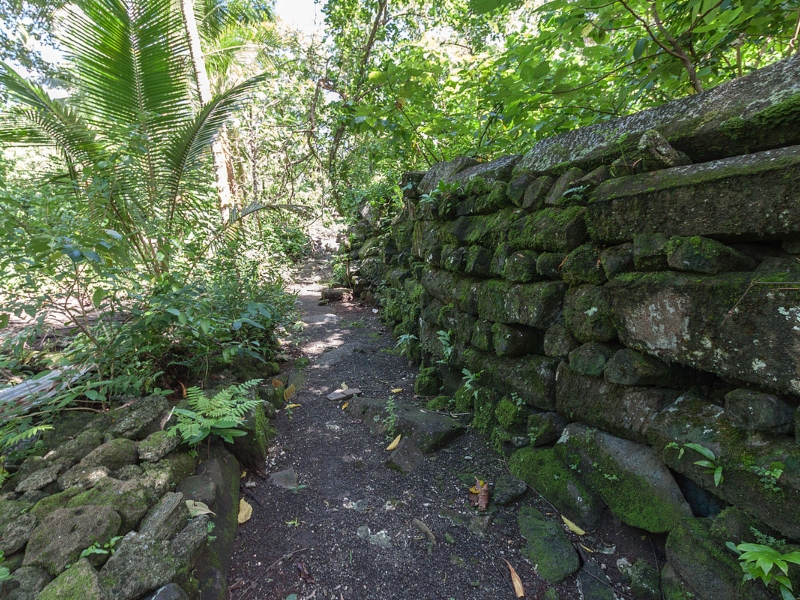
Source: Maloff1 / Common wiki
The nitty-gritty of human life during the early centuries remains a mystery, but many theories are floating around about the same. Some are sacred, others hint at magic, and the rest are even more bizarre.
Origin of the Basalt
The prehistoric city of Nan Madol as we know it has been constructed with naturally occurring basalt boulders, coral fills, and prismatic basalt columns. These structures, some light enough for anyone to carry but most too heavy for human lifting, have been carefully transported from a volcanic plug on the opposite side of the lagoon in Pohnpei.
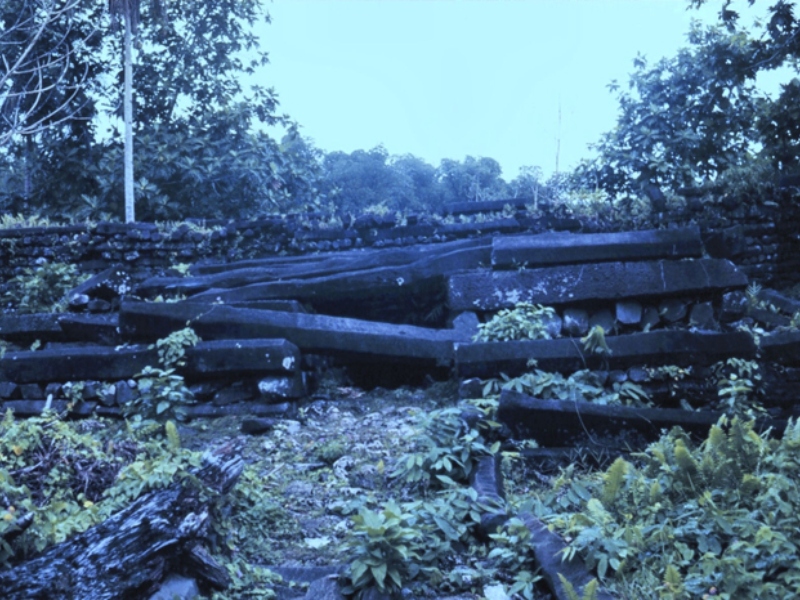
Source: Dr. James P. McVey, NOAA Sea Grant Program / Common wiki
At first glance, the entire city appears to float on a bed of coral reefs because the basalt structures have been carefully placed atop one another to form an impressive wall surrounding 130 buildings.
Mystery Behind its Transportation
Modern archaeologists had concluded that the construction of the megalithic architecture began around 1180 AD to 1200 AD, the ancient period when the technology was too primitive to have been able to transport such massive boulders from one end of the island to another.
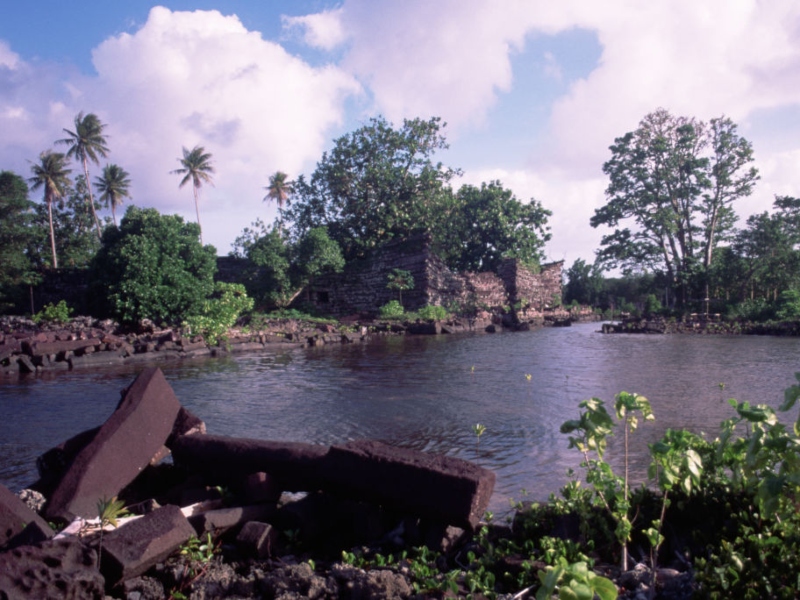
Source: Nik Wheeler/Corbis via Getty Images
Speculations arise about how those stones have not only been mysteriously transported from afar but have also been hoisted up and stacked as high as 25 feet in some places without the help of modern tools. The theories surrounding this aspect add to the archaeological site’s infinite charm and mystery.
More Impressive Than the Pyramids
The sheer scale and the superiority of the stone architecture have the archaeologists stunned and stumped at the efforts of the Pohnpeian builders. No doubt that the construction of this magnificent megalithic structure rivals that of the Pyramids of Egypt.
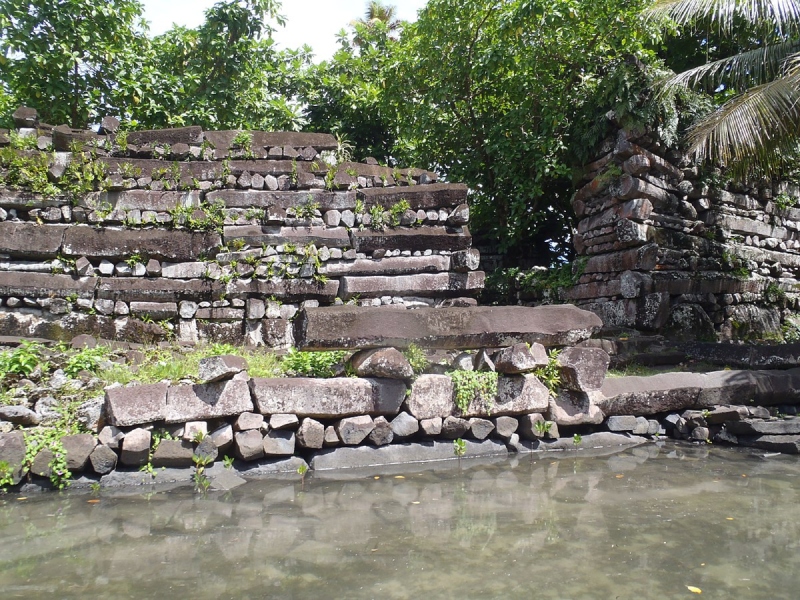
Source: Patrick Nunn / Common wiki
Without access to modern diving methods, they must have sunk the basalt columns with a total estimated weight of 750000 tonnes into the lagoon and retrieved it at their destination using an unknown method. What was it, and who were the masterminds behind the stunning structure that perplexed modern archaeologists?
The Myth Behind the Mystery
As we mentioned earlier, there are enough and more theories floating around about Nan Madol; let’s uncover them one by one. An early theory claimed the builders of the Leluh archaeological site at Kosrae, one of the critical states of the Federated States of Micronesia, had later migrated to Nan Madol.

Source: Patrick Nunn / Common wiki
These builders then constructed the more impressive city. Still, the carbon dating disproved that theory stating that it’s more probable that Leluh, which came into existence after Nan Madol, was the one to be inspired by the ancient city model.
The Twin Brothers
As old as time, mythology successfully enters the zone when science fails to offer a reasonable explanation. Pohnepian legend has it that Nan Madol owes its existence to the ingenuity of twin brothers – Olisihpa and Olosohpa, who hailed from the mythical regions of Western Katau, also known as Kanamwayso.
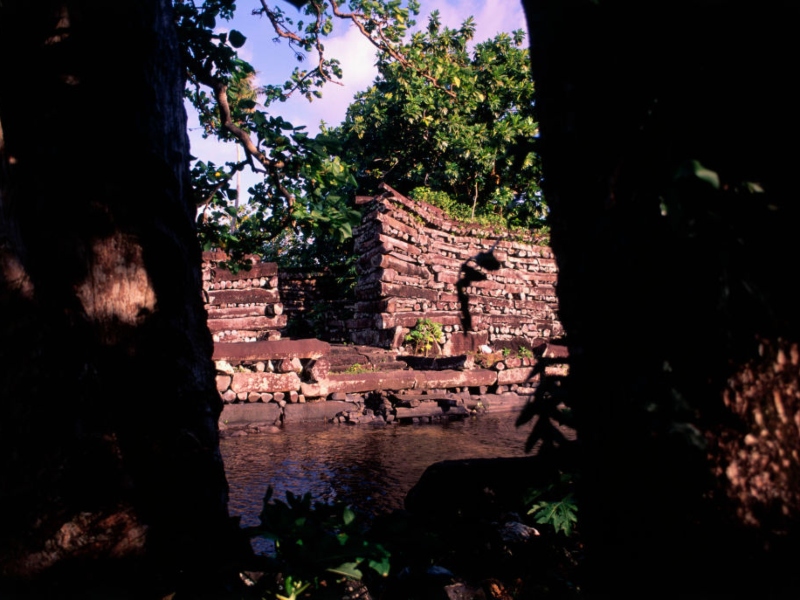
Source: Nik Wheeler/Corbis via Getty Images
What started as an intention to build an altar soon turned into the brothers’ hunger for power. Until they arrived from Katau to Nan Madol on a large canoe, the city had no unified political power, which was exactly what the twins set out to achieve.
The God of Agriculture
Initially, the sole purpose of the siblings was to build a place of worship for Nahnisohn Sahpw, the God of agriculture. Ironically, Nan Madol, without ready access to food or water, wasn’t cultivable. After several unsuccessful attempts, they finally built an altar off the coast of Temwen Island.

Source: Patrick Nunn / Common wiki
According to the legend, they spent their time performing elaborate rituals to levitate the enormous basalt slabs to fit into the formation of the legendary Nan Madol. People also believe that the two extraordinary men used the magic of flying dragons to build their dream site.
Sorcery Vs. Science
Can sorcery be left behind when science makes way for myths, magic, and mysteries? Apparently, not! The mysterious siblings Olisihpa and Olosohpa quickly earned a reputation for their sorcery, making the construction of the iconic Nan Madol a reality.
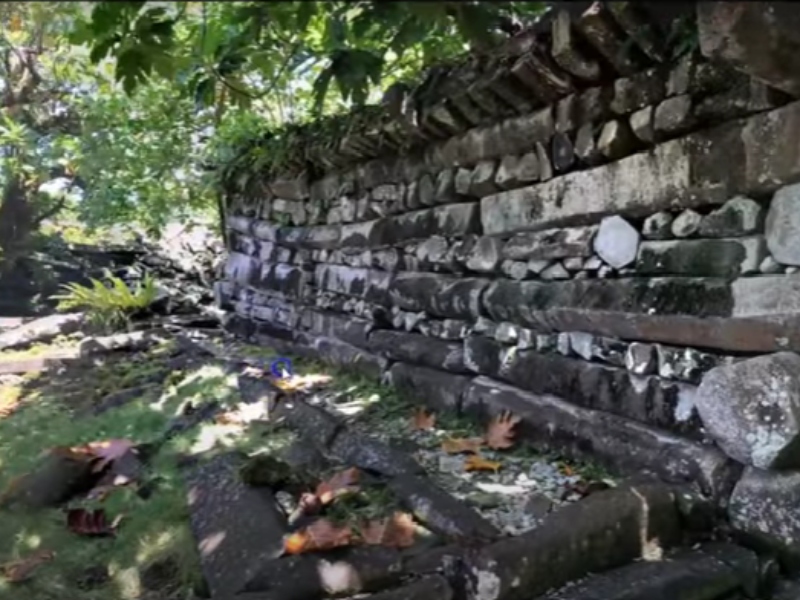
Source: youtube
Despite many theories stating otherwise, a vast section of people still believes that the entire city is the work of sorcery since there has not been a viable explanation for the movement of 750000 metric tonnes of heavy basalt stones from one end to another.
The Reign of the Saudeleur Dynasty
With their arrival, the brothers established their dominance over the population of Nan Madol. After the demise of Olisihpa, his brother Olosohpa became the first Saudeleur to rule as the founder of the Saudeleur dynasty, which continued to reign until about 1628 AD.
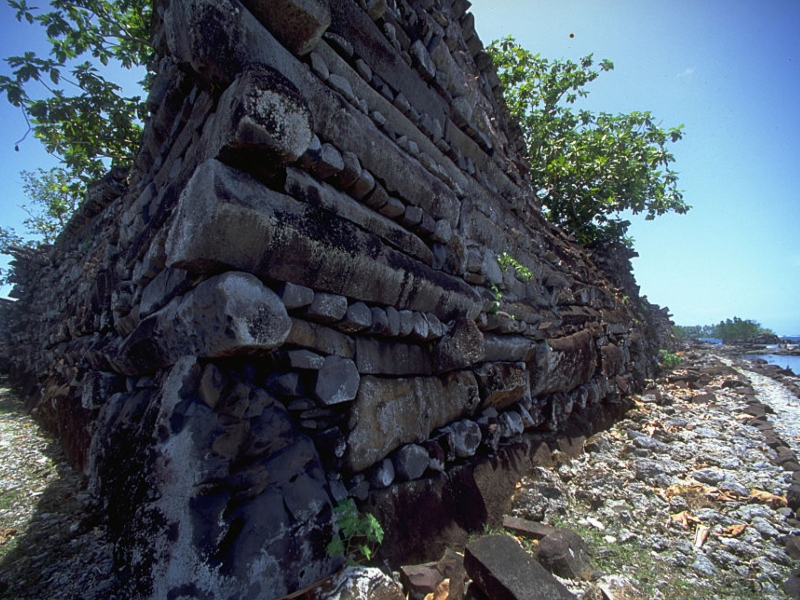
Source: Douglas Peebles/Corbis via Getty Images
The founding generations were kind rulers, but with time, the future generations turned into tyrannical lords who exacted a lot from their subjects, often subjecting them to extreme starvation, eventually leading to the end of their reign. They did leave behind the distinct identity of the place as a sacred city under their rule.
Nan Madol as the Political Hub
Under the reign of the Saudeleur dynasty, Nan Madol became the ruler’s political seat of power. The local royalty resided in the city to oversee the activities and maintain their dominance over the subjects. With no possible way to grow crops inlands or source water from the reefs, the responsibility of bringing water and food fell on the Pohnpeians.
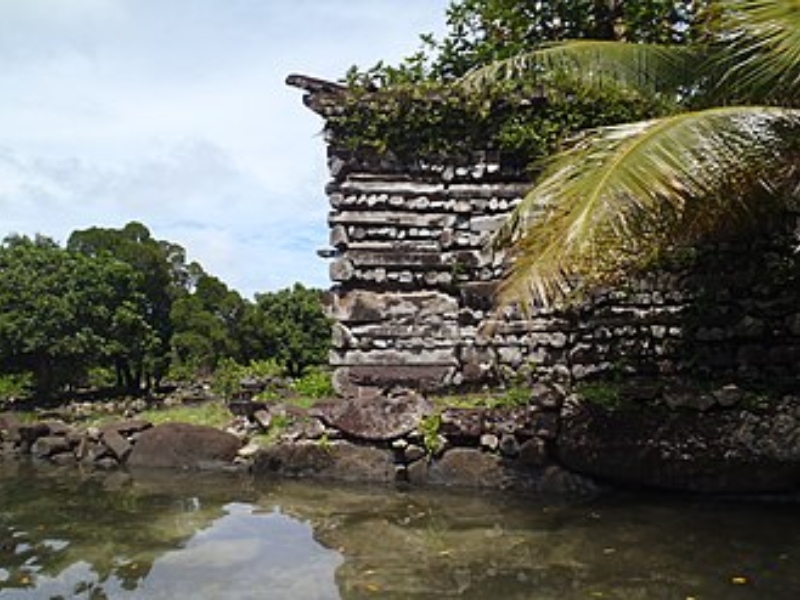
Source: wikipedia
Nan Madol, with its monumental megalithic architecture, established itself as a ceremonial center for the Saudeleur dynasty. From the remains of the chiefly dwellings, it was clear that the largest homes in the region belonged to the elite.
The Legend of Isokelekel
The ultimate invasion of Isokelekel led to the Saudeleur dynasty’s downfall, which had ruled for over 500 years. According to the legend, he was a semi-mythical warrior who came from Kosrae to conquer the ruling dynasty of the Pohnpei Islands sometime during the 16th century.

Source: Patrick Nunn / Common wiki
He also goes by several other names, such as Idzikolkol and Nanparatak, and is referred to as the father of modern Pohnpei. In fact, the current chiefs of the island identify as descendants of his lineage dating back to the invasion of the ancient Islands of Pohnpei.
The Abandoned City
While Isokelekel proved to be a dedicated leader who ruled over the Pohnpei islands for a long time, the generations that followed him soon abandoned the site to explore other regions. This was mainly due to the logistical issues surrounding the constant search and sourcing of water and food; they soon grew tired of it.
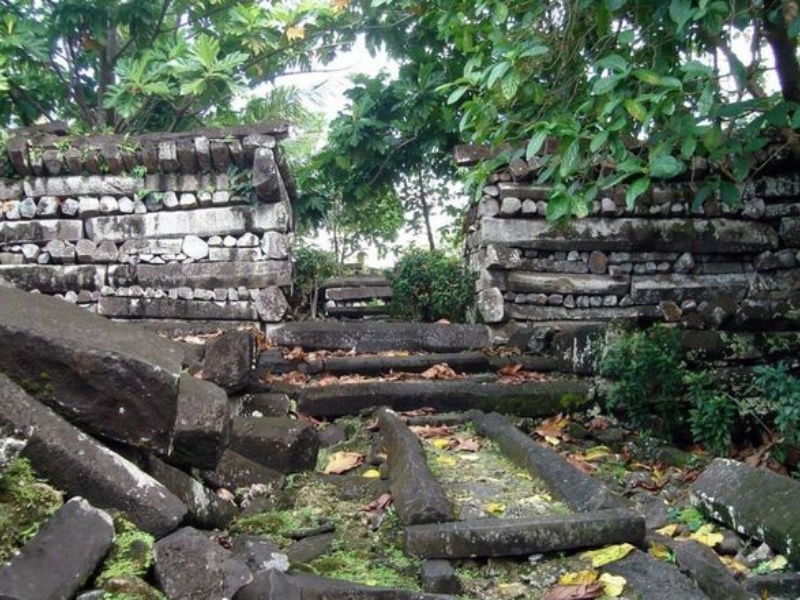
Source: Pinterest
It became a grave matter of survival that prompted them to eventually leave. At one point, Nan Madol boasted over 1000 dwellers when the population of the Pohnpei islands was estimated to be less than 25,000.
The Diverse Uses of the Islets
The man-made islets, consisting primarily of basalt columns, slabs, and boulders, were used in many ways to serve the inhabitants. Most islets were used mainly for residential purposes, with the largest dwellings assigned to the ruling elite. Yet, this wasn’t the most fascinating of purposes.
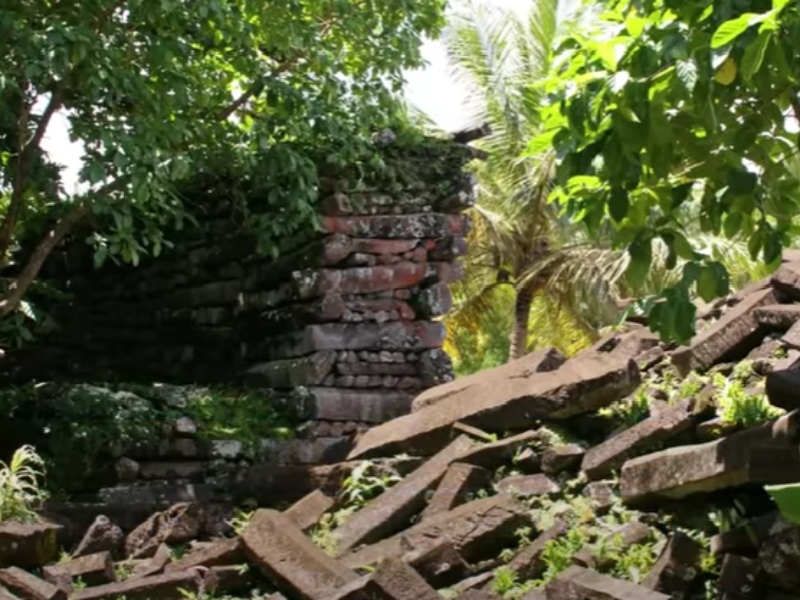
Source: youtube
The inhabitants were highly skilled in putting the islets to good use. Some of them were turned into hubs for food preparation, which served to feed the entire region’s population. Other uses that were equally important were canoe building and the production of coconut oil.
The Royal Mortuary of Nandowas
One of the most architecturally impressive islets at Nan Madol is the Nandowas islet. Together, the 92 artificial islets came to be the heart of the ruling dynasty and were divided into two – Madol Pah, the lower city which acted as the administrative center, and Madol Powe, the higher city that was the ceremonial center of the complex.
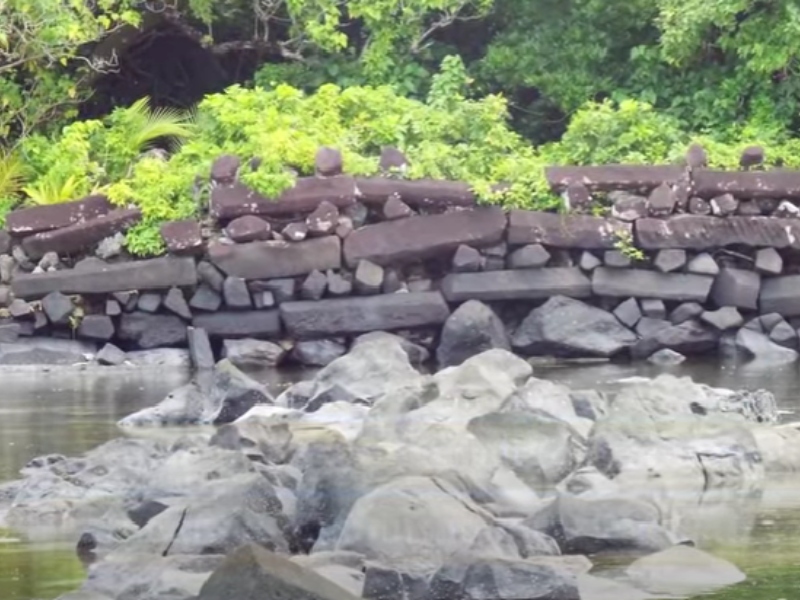
Source: youtube
The latter is the mortuary sector consisting of 58 islets, and one houses the royal mortuary of Nandowas, which became the centerpiece of the entire complex. It has 7.5 feet of walls surrounding the tomb enclosure.
The Mega-Giants of Nan Madol
During German rule in the early 20th century, Governor Victor Berg entered the sealed chambers of a tomb in Nan Madol and excavated the skeletons that looked like they belonged to giants seven to ten feet tall. The discovery perpetuated the theory that these towering giants were the ones to transport the basalt edifices from across the ocean and build those impressive walls.
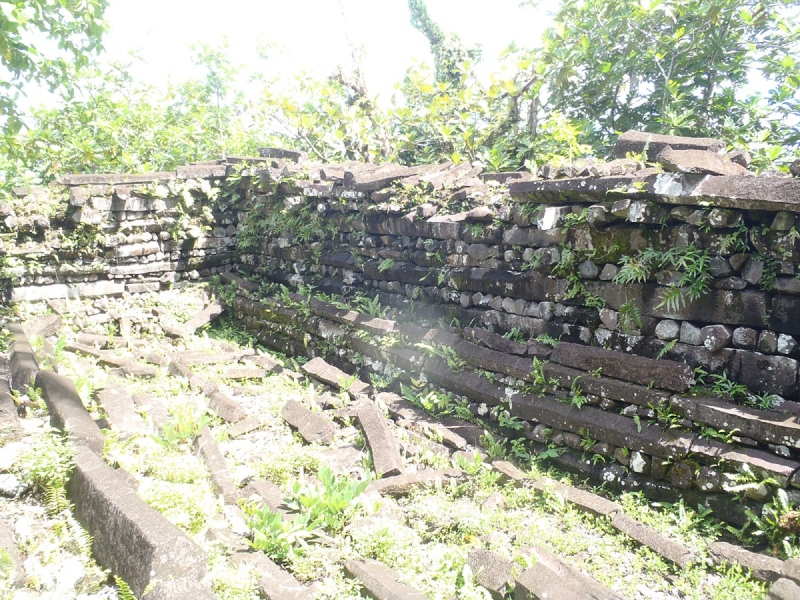
Source: Patrick Nunn / Common wiki
One stormy night in 1907, shortly after the governor found the bones in the tomb, he passed away under mysterious circumstances. The natives soon attributed it to the curse of the land.
The Ghost City
The ancient city is steeped in legends and myths that have cast an eerie spell around the ruins of Nan Madol. Its spookiness is probably why many are terrified of visiting the site, which has, over the years, also been referred to as the Ghost City.
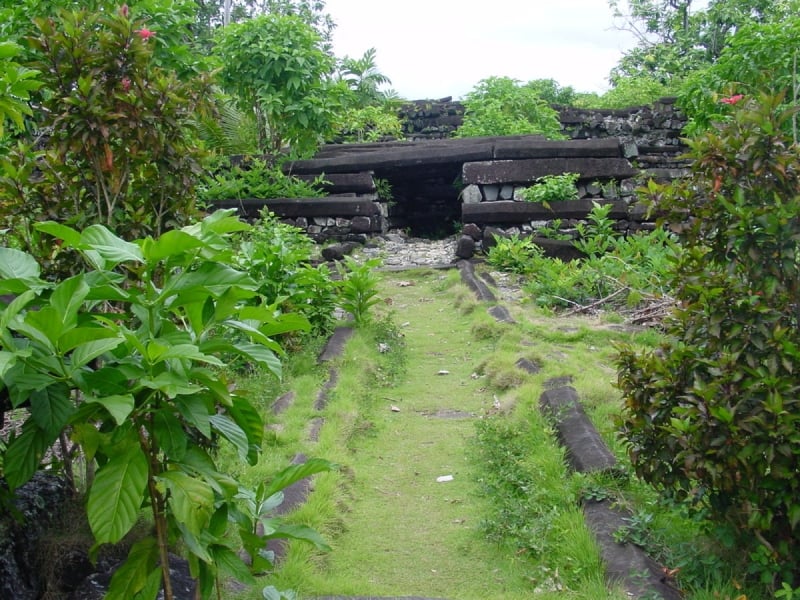
Source: CT Snow from Hsinchu, Taiwan / Common wiki
The splendor of Nan Madol remains unsurpassed. Interestingly, its diverse history, mostly spooky, is the primary reason some even visit the site far from civilization. In fact, it seems like the place was deliberately built in a difficult-to-access area but reaching the region has infinite rewards.
Inspiration for the Fictional City of R’Lyeh
Speaking of spooky old cities, the myths and the mysteries surrounding the Ghost City inspired horror writer H.P. Lovecraft’s fictional sunken city of R’lyeh, that primarily appears in the short story ‘Call of Cthulhu’ of his Cthulhu Mythos.
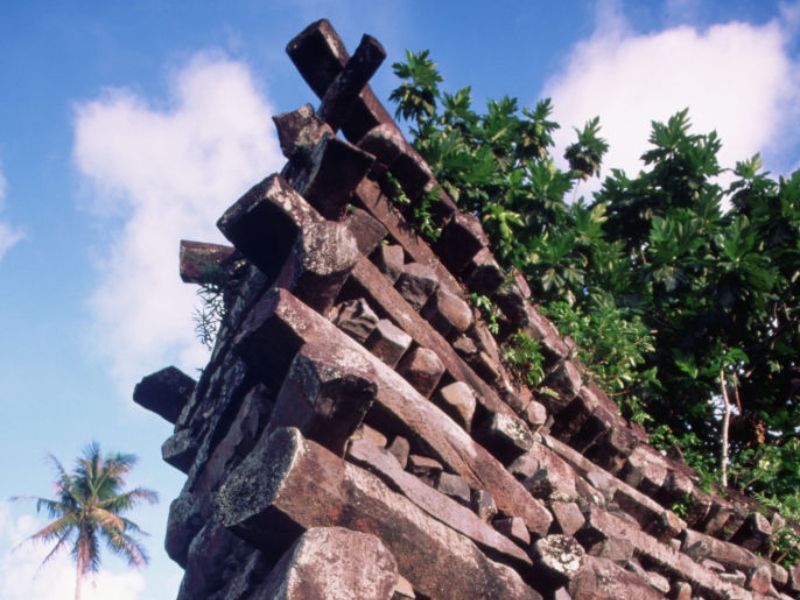
Source: Nik Wheeler/Corbis via Getty Images
The legend of Nan Madol and its unique history is well-represented in the story first published in 1928 in the popular pulp fiction magazine Weird Tales. In fact, the famous mythopoeia consists of a loosely intertwined collection of horror stories featuring several imaginary cultural elements such as R’lyeh.
Listed as a UNESCO World Heritage Site
Ones who have been fortunate enough to visit the ruins of Nan Madol deem it at par with megalithic wonders such as Machu Picchu and the Pyramids of Egypt. The ancient city is considered one of the rarest megalithic sites in the Pacific, if not in the world.

Source: youtube
Unfortunately, the site hadn’t garnered much interest outside the archaeological community until 2016, when it was listed as a UNESCO World Heritage Site. It took several centuries since the initial archaeological investigations began in the late 1800s for it to gain international public recognition.
Added to World Heritage in Danger List
Sadly, Nan Madol jumped straight from the honor of being recognized as a World Heritage site to the World Heritage in Danger list. It happened mainly due to the extensive water siltation that has undermined the existing man-made structures and the uncontrolled growth of mangroves.
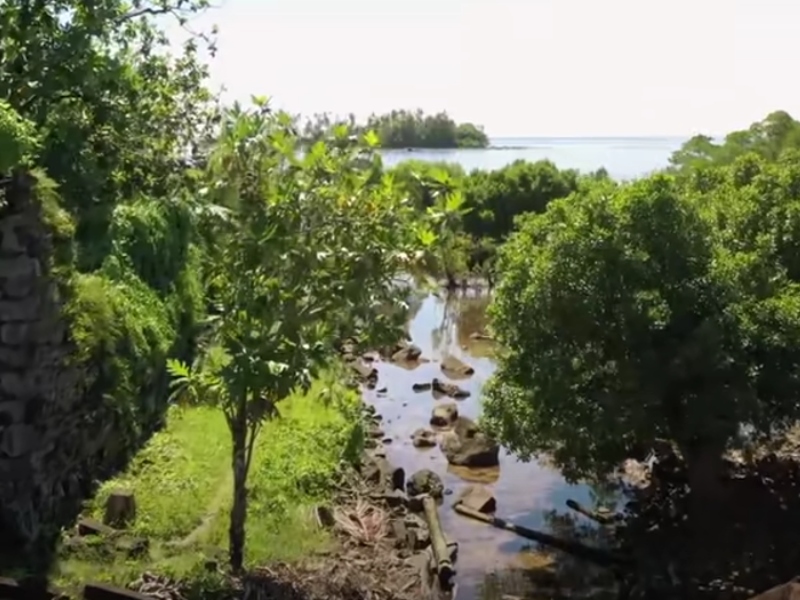
Source: youtube
Another contributing factor was the severe under-representation of the heritage sites in the Pacific region on the world map. Significant efforts have since been taken by the state government of Pohnpei and UNESCO to preserve and protect the biodiversity of the invaluable prehistoric city.
